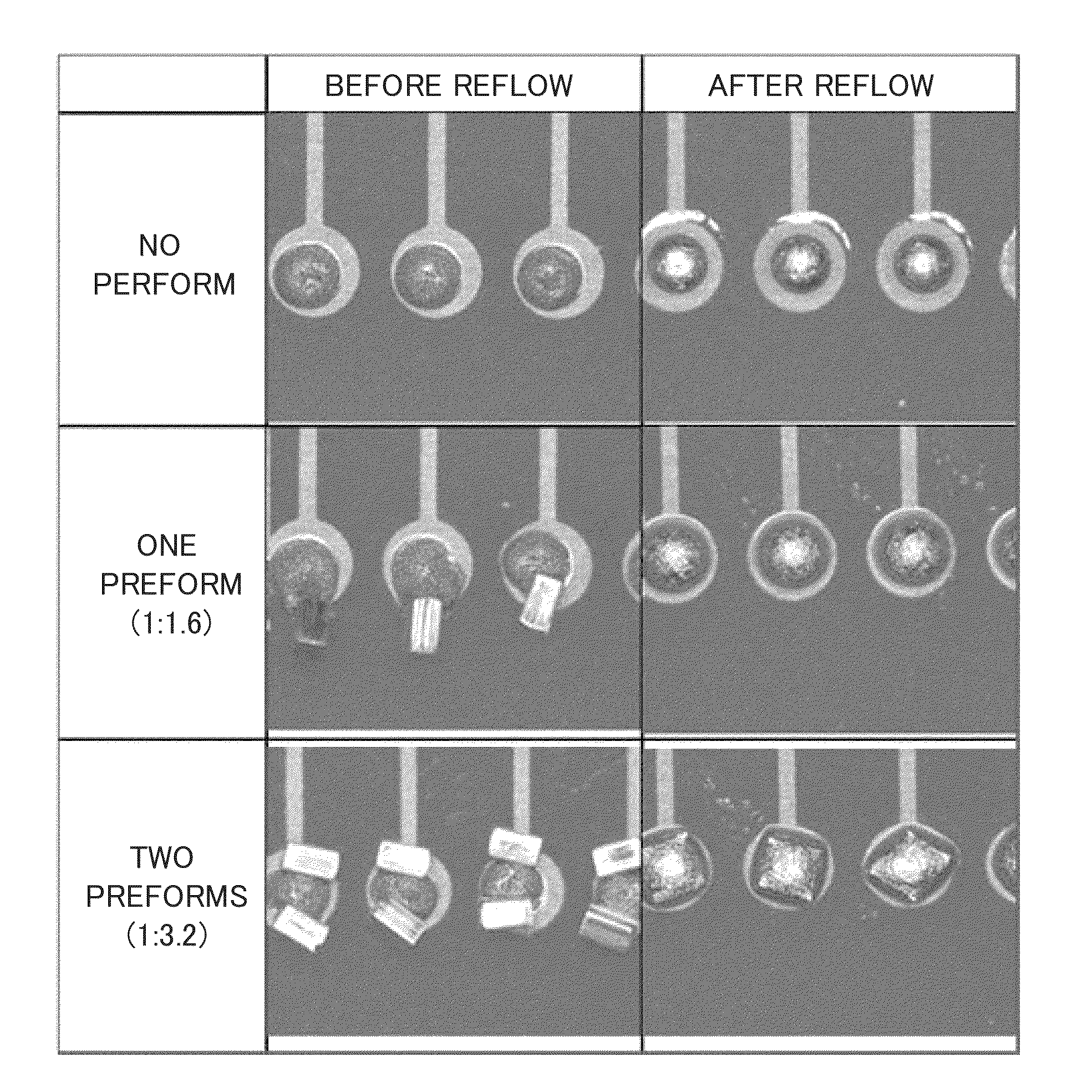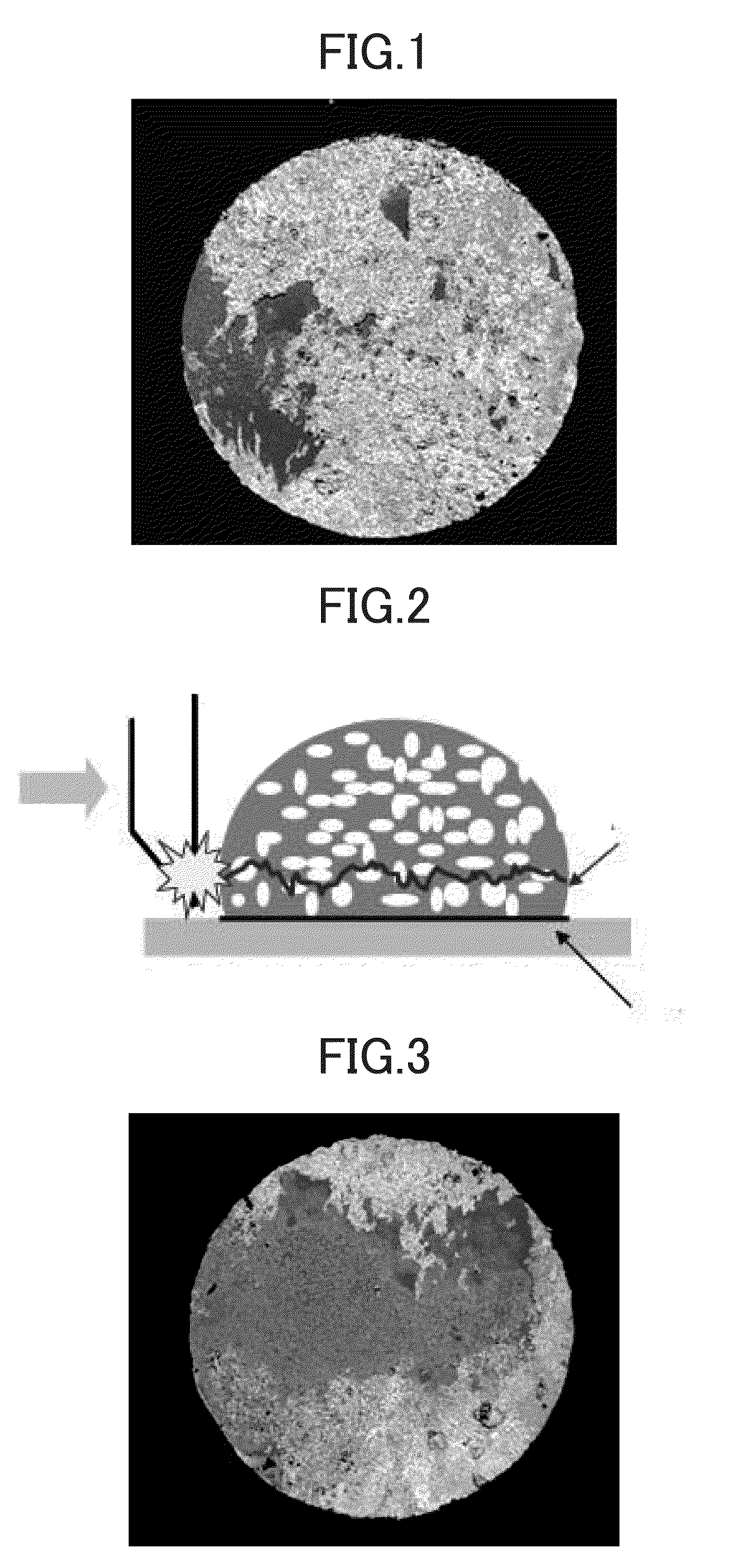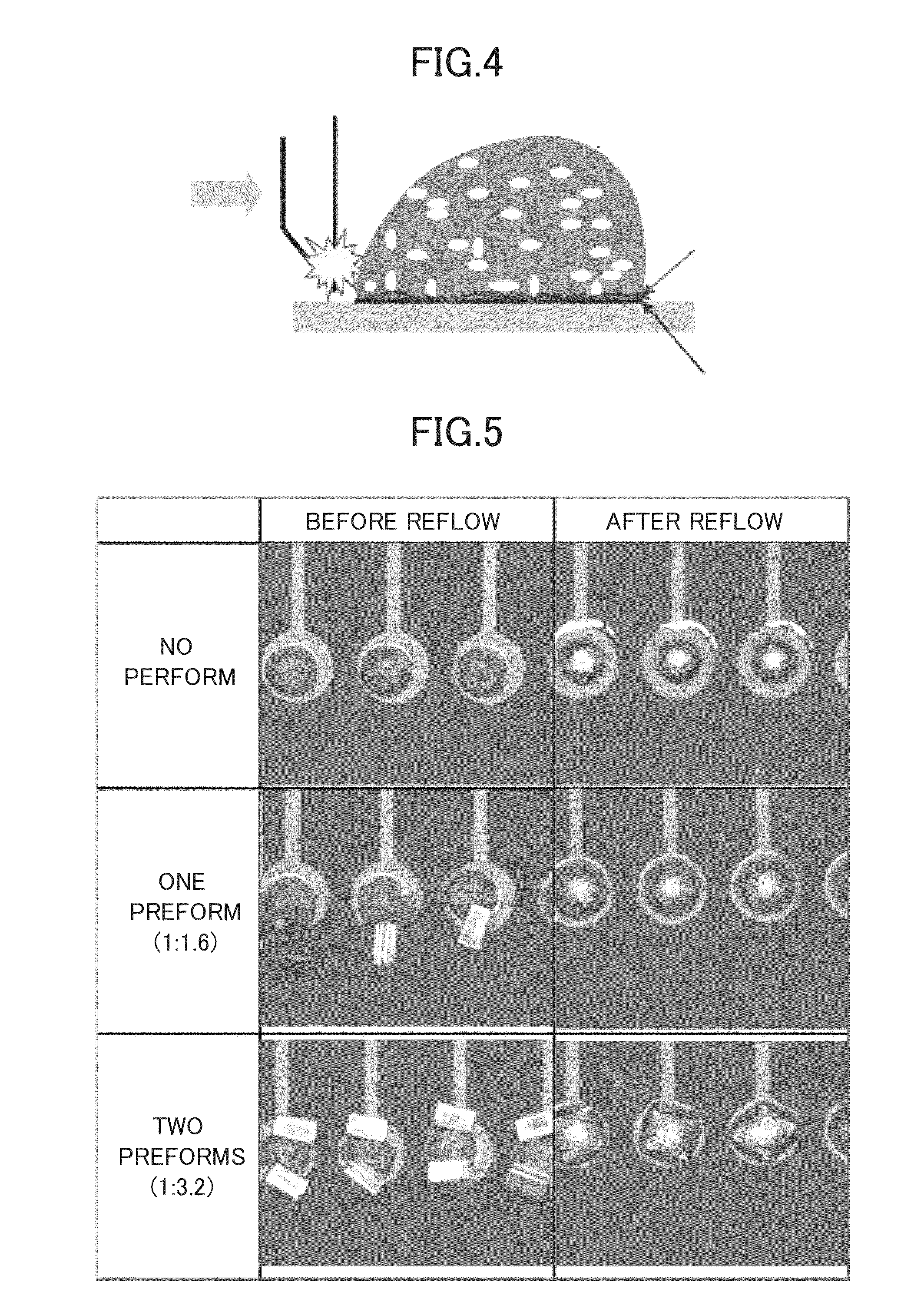Soldering method using a low-temperature solder paste
a solder paste and printed circuit board technology, applied in the direction of welding/cutting media/materials, solventing apparatus, manufacturing tools, etc., can solve the problems of low heat resistance electronic parts that cannot be used, pb dissolved in the discarded printed circuit board, and often buried electrical devices, etc., to achieve low heat resistance and reduce electric power consumption
- Summary
- Abstract
- Description
- Claims
- Application Information
AI Technical Summary
Benefits of technology
Problems solved by technology
Method used
Image
Examples
example 1
[0032]Under the conditions shown in Table 1, preforms were placed on lands printed with a SnBi-based solder paste, and reflow soldering was carried out under the usual heating conditions for a SnBi-based solder paste.
[0033]After allowing to cool to room temperature, a drop test was carried out, and the number of times until soldered portions broke was measured. The test method for the drop test was as follows.
[0034]The test board was a glass epoxy printed circuit board (FR-4) measuring 30×120 mm and having a thickness of 0.8 mm.
[0035]In the drop test, both ends of the test board were secured to a special jig with the test board suspended 10 mm above a base. In accordance with JEDEC (Joint Electron Device Engineering Council) specifications, an impact with an acceleration of 1500 G was repeatedly applied. An increase in resistance to at least 1.5 times the initial resistance was viewed as indicating fracture. The number of drops until this level was reached was recorded.
[0036]The res...
example 2
[0040]A solder paste using a solder powder with a Sn-57Bi-1Ag composition was printed onto copper lands measuring 0.5 mm in diameter formed on a printed circuit board like that shown in FIG. 5. One or two preforms having a Sn-3.0Ag-0.5Cu composition and measuring 0.5 mm×0.25 mm were placed atop each land which had been printed with the solder paste, and reflow soldering was carried out at 200° C., which is the usual heating condition for a solder paste with a Sn-57Bi-1Ag solder composition.
[0041]This test ascertained the amount of a preform added to a solder paste of a Sn—Bi composition. With addition of one preform, the ratio of the weight of the solder paste to the weight of the preform was 1:1.6, and with addition of two preforms, it was 1:3.2.
[0042]The soldered state after reflow soldering was observed to ascertain whether it was possible to perform soldering under usual reflow conditions for a low-temperature solder.
[0043]It was confirmed that with one preform, the solder compo...
PUM
| Property | Measurement | Unit |
|---|---|---|
| melting point | aaaaa | aaaaa |
| melting temperature | aaaaa | aaaaa |
| melting temperature | aaaaa | aaaaa |
Abstract
Description
Claims
Application Information
 Login to View More
Login to View More - R&D
- Intellectual Property
- Life Sciences
- Materials
- Tech Scout
- Unparalleled Data Quality
- Higher Quality Content
- 60% Fewer Hallucinations
Browse by: Latest US Patents, China's latest patents, Technical Efficacy Thesaurus, Application Domain, Technology Topic, Popular Technical Reports.
© 2025 PatSnap. All rights reserved.Legal|Privacy policy|Modern Slavery Act Transparency Statement|Sitemap|About US| Contact US: help@patsnap.com



